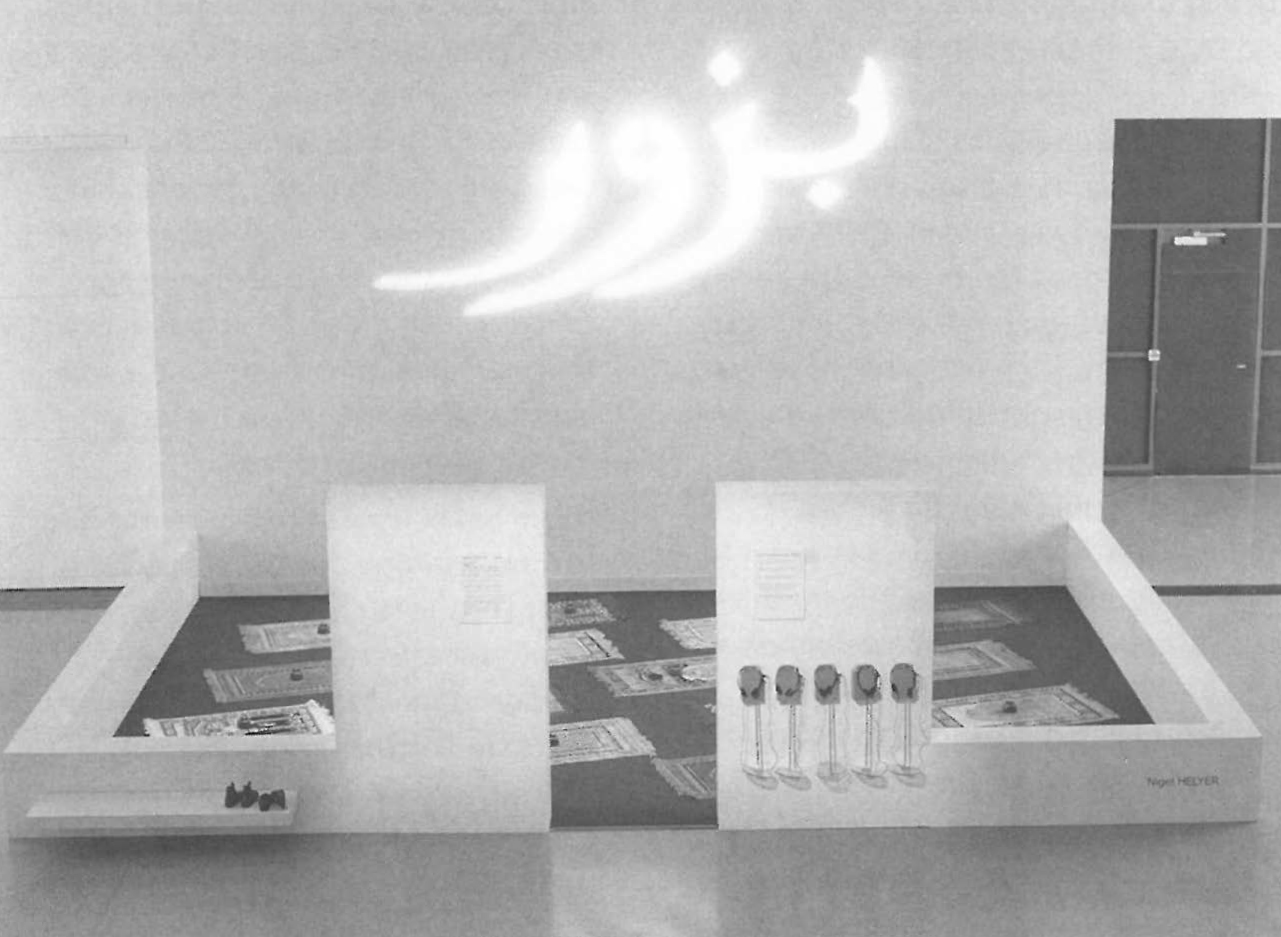
In the 1970s, when Gough Whitlam was Prime Minister of Australia, he once used the phrase 'outer Baluchistan' to indicate an obscure place where nothing much happened. Since then we have learnt that there is no place too obscure to claim its fifteen minutes of fame, and Baluchistan has been more crucial in the affairs of the world than our oversize island that straddles the Pacific and Indian Oceans.
Seed, Nigel Helyer's sound piece on the impact of the terrible mechanisms of war on once obscure Islamic states, crosses a most difficult cultural divide. He brings together the precepts of the shared Old Testament ancestry of Islam, Jewish and Christian faiths. Through his art he shows both an appreciation for their teachings and an awareness of how far those who chant the slogans have strayed from the principles of the faith. Seed is a work about futures, and landmines that are sown by foreign powers in distant lands to be reaped by children playing, perhaps years later. It is a reminder of the Biblical culture of sowing and reaping - and there is a terrible dividend in the harvest. Most importantly, Seed brings these ancient concepts into the devastating present, the age of electronically negotiated war.
At the entrance of Seed is a display of worn children's shoes, apparently discarded at the entrance of a place of prayer (it was the children of Afghanistan who chased after the yellow packages that looked as though they contained food - then they exploded on contact). Behind the wall is a colourful display of prayer mats, of the kind of cheap and colourful cloth found in any Pakistan or Afghan market; and on each mat, a small facsimile landmine.
Helyer is, of course, a sound artist. And it is sound that gives these works their impact. The viewer enters the space with 'mine detecting' tools and headphones. As each mat is approached it does not explode. Instead, the 'mine' is revealed to be a sound unit that beams its message to the 'mine detector'. In the 'mine field' the listener hears words and music from the Islamic culture of otherness which our political leaders tell us is a part of the Axis of Evil. And what do we hear from these voices at prayer and at play? The first sounds are of music, both sacred and secular, from Afghanistan. Then there are the voices. Some of these are inaudible, but they include the ninety nine names of Allah, different ways of describing the greatness of God.
'Our Lord will bring us together and he will judge us with the truth' says a voice in English. 'Creator. Know thy Lord and he is the all-wise creator' intones another.
Helyer's work therefore carries a message of the contradictions of war and prayer, as he reveals that the religion denounced as part of 'The Axis of Evil' is one which upholds the same values as the persecuting Christians and Jews of the United States and its allies. The terrible events of recent years have led to new directions in political art as the world seeks to find some meaning in the tragedies of our time. With Seed Helyer has created a work that works as a visual/sensual experience while making even the most hardened warmonger think of the empty shoes of the children of Afghanistan, and how the children lost their legs.












